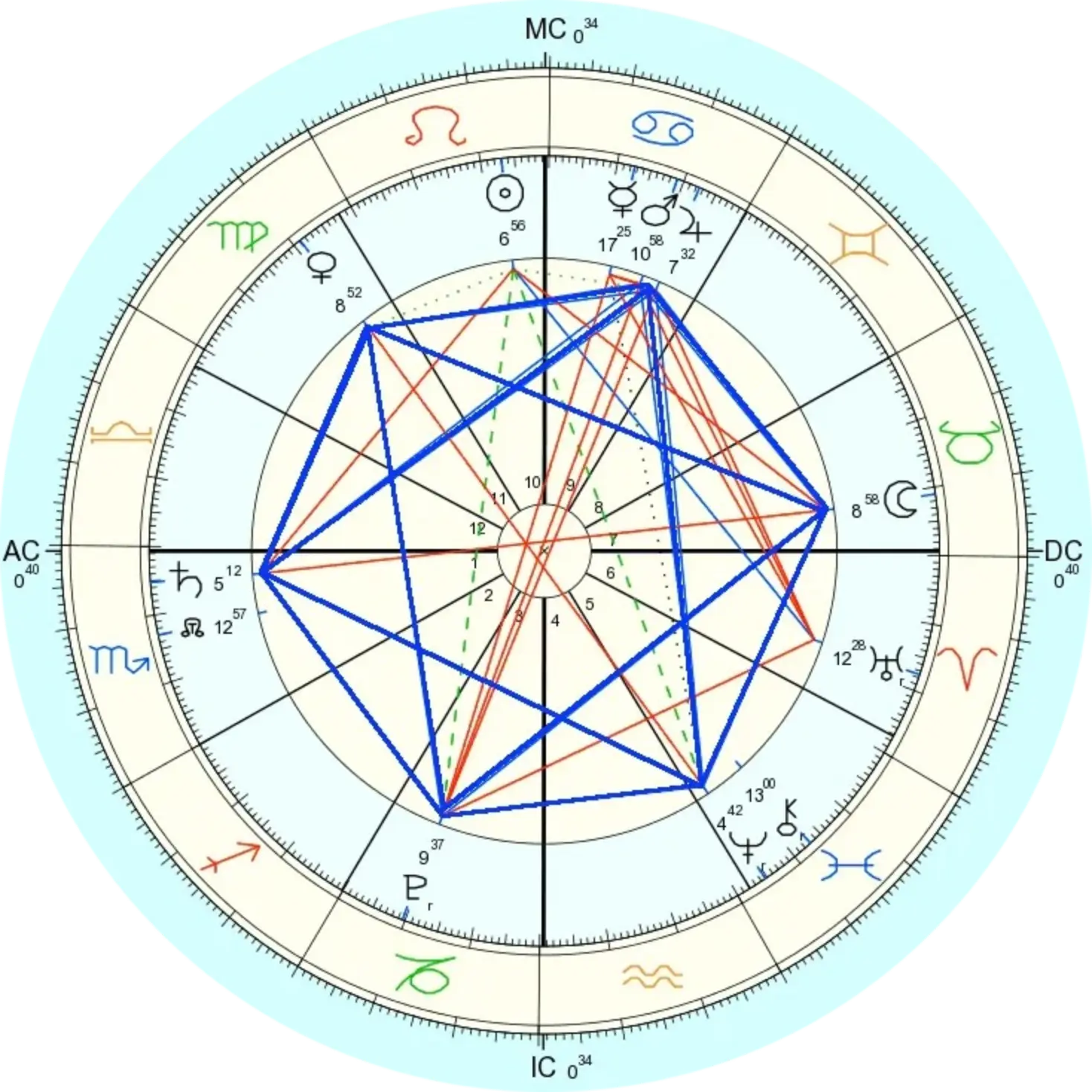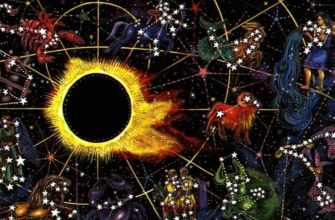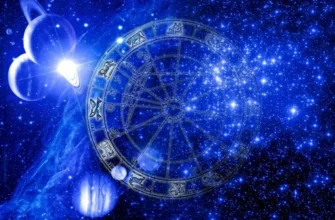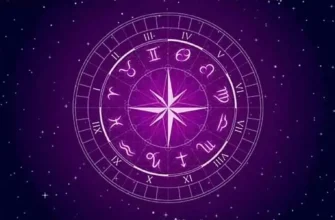A free synastry chart is one of the most powerful tools in modern astrology for understanding relationship dynamics and emotional compatibility. Using an accurate synastry chart calculator, you can compare two birth charts side by side and explore how your planetary placements interact on a deeper level.
How to Calculate Synastry Online for Free
Calculating a synastry chart online is the fastest and most accurate way to understand relationship compatibility without complex astrology calculations. A free synastry calculator allows you to instantly generate a detailed compatibility report by comparing two birth charts side by side. Instead of manually working with ephemerides or astrology tables, you simply enter basic birth data and receive a clear, structured analysis focused on love compatibility and relationship dynamics.
To create an accurate synastry chart astrology report, the calculator requires three key details for both partners: the date of birth, place of birth, and, ideally, the exact time of birth. This information allows the system to calculate precise planetary positions and identify how personal planets, such as the Sun, Moon, Venus, and Mars, interact between two charts. These interactions form the foundation of synastry chart meaning in love compatibility, revealing emotional attraction, communication patterns, and long-term potential.
If the exact birth time is unknown, you can still generate a reliable relationship compatibility analysis by date of birth. Entering a default time (such as 12:00 PM) enables the calculator to focus on planetary aspects that remain stable throughout the day.
Using a free online synastry chart is especially helpful for identifying both strengths and challenges within a relationship. Rather than predicting outcomes, this method highlights patterns that influence emotional bonding, conflict resolution, and long-term commitment. For anyone seeking clarity about romantic potential, a free synastry chart calculator offers a practical and psychologically grounded approach to understanding how two people truly connect.
Synastry Aspects Meaning: Relationship Compatibility and Love Astrology
When exploring the synastry chart meaning in love compatibility, astrology focuses on how planets such as the Sun, Moon, Venus, and Mars interact between two charts. These interactions form the emotional language of a relationship. Relationship synastry aspects explained through conjunctions, trines, oppositions, and squares can show where harmony flows naturally and where challenges demand growth and understanding. For example, strong Moon-Venus or Sun-Moon aspects often indicate emotional safety and affection, while challenging Saturn or Pluto aspects may reveal karmic lessons, long-term bonds, or transformative experiences that shape the relationship over time.
In synastry chart astrology, no single aspect defines success or failure in love. Instead, compatibility is revealed through patterns — emotional resonance, communication styles, physical attraction, and shared life direction. A well-interpreted synastry chart helps you understand not only how you love, but why you love the way you do with a specific person. This deeper awareness allows relationships to grow with clarity, compassion, and conscious choice rather than confusion or unrealistic expectations.
☀ Sun Synastry Aspects: Core Compatibility and Relationship Dynamics
The Sun in synastry reveals the core identity each partner brings into the relationship. Sun aspects show how two individuals express vitality, purpose, and ego within their connection. These aspects help explain mutual attraction, shared goals, and the compatibility of life paths. Understanding Sun synastry is essential for interpreting long-term relationship potential and overall relational harmony.
- Sun-Mars Aspects in Synastry: Physical Chemistry and Energy Dynamics
- Sun-Pluto Aspects in Synastry: Power Struggles and Deep Transformation
- Sun-Moon in Synastry: Soulmate Connection and Emotional Compatibility
- Sun-Venus Aspects in Synastry: Attraction, Values, and Romantic Compatibility
- Sun Mercury Synastry Aspects: Communication in Birth Chart Compatibility
- Sun Node Synastry Aspects: Karmic Destiny in Birth Chart Compatibility
- Sun Saturn Aspects in Synastry: Karmic Responsibility Mature Partnership
- Sun Uranus Aspects in Composite Charts: Unconventional Relationships
- Sun and Moon Aspects in Synastry – How They Shape Love and Compatibility
🌙 Moon Synastry Aspects: Emotional Bonding, Sensitivity, and Relationship Compatibility
Moon synastry aspects illuminate emotional chemistry, instinctive reactions, and the sense of comfort partners feel with each other. The Moon governs intimacy, nurturing, and subconscious needs, making it central to long-term compatibility. These aspects show how easily two people feel understood, supported, and emotionally safe, forming the foundation of deep relationship bonding.
- Moon-Neptune Aspects in Synastry: Spiritual Connection and Emotional Illusion
- Moon-Ascendant Aspects in Synastry: Emotional Triggers
- Moon-North Node Aspects in Synastry: Past Life Emotions and Soul Growth
- Moon-Moon Aspects in Synastry: Emotional Resonance Nurturing Compatibility
- Moon Mercury Aspects in Synastry: Emotional and Intellectual Communication
- Moon in Synastry: Emotional Dynamics and Domestic Comfort
- Moon Aspects in Relationship Astrology: Cohabitation Compatibility Analysis
- Moon Sign Matches Partner’s Rising Sign: Relationship Astrology Analysis

☿ Mercury Synastry Aspects: Communication Style, Mental Connection, and Compatibility
Mercury synastry aspects reveal how partners communicate, think, and process information together. They shape intellectual chemistry, conversational flow, and conflict resolution. When Mercury is well-aspected, communication becomes a powerful bridge; when challenged, misunderstandings arise. These aspects are essential for evaluating mental compatibility and long-term harmony in any relationship.
- Mercury Square Jupiter in Synastry: When Practical Thinking Clashes With Grand Vision
- Mercury Opposition Neptune in Synastry: When Logic Meets the Fog
- Mercury Square Uranus in Synastry: When Your Brain Meets Their Chaos
- Mercury Conjunct Neptune in Synastry: The Spiritual Communicator
- Mercury Trine Neptune in Synastry: Harmonious Communication
- Mercury Trine Saturn in Synastry: Teacher-Student Wisdom Exchange
- Mercury Square Neptune in Synastry: Communication Confusion
- Mercury-Pluto Aspects in Synastry: Transformative Communication
- Mercury Aspects in Synastry: Communication Patterns and Compatibility
♀ Venus Synastry Aspects: Love Compatibility, Attraction Patterns, and Romantic Chemistry
Venus in synastry describes how partners give and receive love, express affection, and connect romantically. These aspects influence attraction, desire, and shared values in relationships. Whether harmonious or challenging, Venus aspects shape relationship aesthetics, emotional comfort, and the potential for long-lasting love. They are central to understanding romantic compatibility.
- Venus Trine Mars in Synastry: Tender Devotion
- Venus Square Uranus in Synastry: Love Defies Convention
- Venus Opposition Pluto in Synastry: Power Struggle Beyond Reason
- Venus Conjunct Uranus in Synastry: Lightning Strikes and Freedom’s Call
- Venus Square Saturn in Synastry: The Karmic Debt Collector
- Venus Square Jupiter in Synastry: The Mirage of Abundance
- Venus Conjunct Jupiter in Synastry: The Lucky Love Connection
- Venus Trine Neptune in Synastry: Divine Romance
- Venus-Venus Aspects in Synastry: Love Languages and Aesthetic Compatibility
- Venus-Pluto in Synastry: Transformative Love and Power Dynamics
- Venus-Jupiter Aspects in Synastry: Expansion, Joy, and Excess in Love
- Venus Uranus Aspects in Synastry: Excitement Freedom and Unpredictability
- Venus Mars Synastry Aspects: Sexual Chemistry
- Venus Conjunct Chiron in Synastry: Wounded Healer in Love
- Venus Saturn Synastry Aspects: Commitment and Challenge
- Venus Node Aspects in Synastry: Karmic Love and Soul Mate Connections
- Venus-Neptune Aspects in Marriage and Commitment Patterns
- Venus-Neptune Aspects in Synastry: Romance, Illusion, and Spiritual Love
♂ Mars Synastry Aspects: Sexual Chemistry, Conflict Patterns, and Relationship Energy
Mars synastry aspects reflect the physical spark, sexual attraction, and dynamic energy between partners. They also indicate conflict style, assertiveness, and how each person pursues desires. Mars governs passion and tension, making these aspects essential for understanding the balance of intimacy, chemistry, and potential friction within a relationship.
- Mars Trine Neptune in Synastry: When Warrior Meets Muse
- Mars Opposition Uranus in Synastry: When Force Meets Lightning
- Mars Opposition Saturn in Synastry: When Passion Meets the Jailer
- Mars Square Jupiter in Synastry: When Ambition Meets Overreach
- Mars Opposition Mars in Synastry: Direct Confrontation
- Mars Square Mars in Synastry: Conflict Dynamics
- Mars Trine Pluto in Synastry: Empowered Action
- Mars Conjunct Pluto in Synastry: Power Partnership
- Mars Trine Jupiter in Synastry: Action Empowered by Vision
- Mars Conjunct Uranus in Synastry: Unconventional Attraction
- Mars-Jupiter Aspects in Synastry: Social Expansion and Dynamic Growth
- Mars-Chiron Aspects in Synastry: Wound Activation
- Mars-North Node Aspects in Synastry: Karmic Action and Soul Growth
- Mars-Uranus Aspects in Natal Charts: Sexual Energy and Stimulation Needs
♃ Jupiter Synastry Aspects: Growth, Optimism, and Long-Term Relationship Potential
Jupiter synastry aspects highlight generosity, support, and emotional expansion within relationships. They bring optimism, shared belief systems, and growth potential. These aspects often create a sense of ease, encouragement, and mutual upliftment. Jupiter’s influence contributes to long-term compatibility by fostering trust, positivity, and shared life perspectives.
- Jupiter Trine Jupiter in Synastry: When Two Lucky Stars Align
- Jupiter Square Saturn in Synastry: When Good Intentions Drain Your Bank Account
- Jupiter Square Pluto in Synastry: Resource Control
- Jupiter Trine Pluto in Synastry: Power Behind Fortune
- Jupiter Opposition Jupiter in Synastry: When Worldviews Collide
- Jupiter Conjunct Uranus in Synastry: Revolutionary Expansion
- Jupiter Opposition Neptune in Synastry: Idealistic Dreams
- Jupiter Aspects in Relationship Astrology: Marriage Compatibility Analysis
♄ Saturn Synastry Aspects: Karmic Lessons, Commitment Patterns, and Relationship Structure
Saturn synastry aspects define commitment, responsibility, and long-term structural dynamics. They reveal karmic lessons, emotional challenges, and the level of maturity within the relationship. Saturn’s influence can stabilize a partnership or create pressure depending on how partners handle obligations and expectations. These aspects are crucial for understanding relationship durability.
- Saturn Square Uranus in Synastry: Stability vs Revolution
- Saturn Conjunct Pluto in Synastry: Karma’s Mentor Meets the Bomb
- Saturn Opposition Saturn in Synastry: Mentorship to Power Struggle
- Saturn Trine Neptune in Synastry: Structure Makes Dreams Real
- Saturn Opposition Neptune in Synastry: Reality vs Dreams
- Saturn Square Saturn in Synastry: When Core Values Collide
- Saturn Trine Saturn in Synastry: Aligned Social Values
- Saturn Trine Uranus in Synastry: Wisdom Meets Innovation
- Saturn-Saturn Aspects in Synastry: Commitment vs Breaking Point
- Saturn North Node Aspects in Synastry: Karmic Lessons
- Synastry Astrology: Saturn in the Seventh House & Relationships
♅ Uranus Synastry Aspects: Freedom, Unpredictability, and Relationship Breakthroughs
Uranus synastry aspects bring excitement, unpredictability, and breakthroughs in relationships. They stimulate independence, change, and innovation, often creating sudden attractions or shifts. While thrilling, Uranian aspects can also produce instability if not balanced with grounding elements. They are key in understanding unconventional relationship patterns and personal freedom dynamics.
- Uranus Trine Pluto in Synastry: Revolutionary Support
- Uranus Trine Uranus in Synastry: Generational Harmony
- Uranus Conjunct Neptune in Synastry: Spiritual Resonance
♆ Neptune Synastry Aspects: Spiritual Bonding, Illusion, and Emotional Sensitivity
Neptune synastry aspects reveal spiritual connection, emotional vulnerability, and idealization in relationships. They can inspire deep compassion and intuitive bonding but may also create confusion, projection, or unrealistic expectations. Neptune’s influence shapes romantic fantasy, soul-level empathy, and the delicate balance between inspiration and illusion.
- Neptune Conjunct Pluto in Synastry
- Neptune Trine Pluto in Synastry
- Neptune Square Pluto in Synastry
- Neptune Square Neptune in Synastry
- Neptune Opposition Neptune in Synastry
- Neptune Opposition Pluto: Generational Collision
- Neptune Trine Neptune: Creative Transmission
♇ Pluto Synastry Aspects: Power, Transformation, and Deep Relationship Intensity
Pluto synastry aspects signify intense emotional depth, magnetic attraction, and transformative power. These connections uncover hidden fears, desires, and psychological patterns. Pluto brings passion, obsession, healing, and profound change—often becoming a defining force in long-term relationships. These aspects explain catalytic bonding and karmic emotional evolution.
- Pluto Trine Pluto in Synastry
- Pluto Conjunct Pluto in Synastry
- Pluto Moon Synastry Aspects: Emotional Intensity
- Pluto’s Transformative Undercurrents in Synastry Charts
☊ North Node Synastry Aspects: Karmic Connections, Destiny, and Relationship Purpose
Node synastry aspects describe soul contracts, karmic themes, and destiny within relationships. The North Node reveals growth paths and future-oriented lessons, while the South Node reflects past-life familiarity and emotional comfort. These aspects explain why certain relationships feel fated and how partners influence each other’s spiritual evolution.
🜁 Composite Chart Interpretation: Relationship Purpose, Dynamics, and Shared Potential
A composite chart merges two natal charts into one symbolic relationship blueprint. It reveals the partnership’s emotional climate, purpose, strengths, and challenges. Composite aspects describe how the relationship functions as an entity, helping interpret long-term potential, shared goals, and the deeper meaning behind the connection.
- Composite Chart Rising Signs: Relationship Public Image
- North Node in Composite Charts
- A Complete Guide to Composite Chart Interpretation
🏠 Synastry House Overlays: Relationship Roles, Attraction Patterns, and Compatibility
House overlays show where one partner’s planets activate areas of the other’s life. They describe roles, attraction triggers, emotional needs, and the practical dynamics within a relationship. Understanding house overlays reveals why certain people feel familiar, inspiring, challenging, or transformative, offering a nuanced view of compatibility.
❤️ Relationship Astrology Insights: Key Compatibility Factors and Synastry Interpretation
Physical Attraction in Synastry: Magnetic Aspects, Sexual Chemistry, and Desire Patterns
Relationship astrology explores emotional chemistry, communication style, long-term potential, and the psychological patterns two people activate in each other. It integrates synastry, composite charts, house overlays, and planetary archetypes to provide a complete picture of compatibility. This framework helps explain attraction, conflict, growth, and relationship purpose.
- Understanding Compatibility Through Synastry
- Will I Be Happy? Astrology Insights
- Synastry Aspects and Physical Attraction
- Astrology of Relationships: Key Planetary Influences
- Comparison Chart: Relationship Skills
- Faithful Devotion Astrology
- Physical Attraction Aspects in Synastry
- Synastry Chart Placements: Key Planetary Positions
- Sun-Moon Midpoint in Synastry – Planetary Aspect Interpretation
Synastry by date of birth uncovers how one person’s planets interact with another’s chart, highlighting emotional harmony, points of attraction, and potential areas of tension. Using a synastry chart calculator or a free astrology compatibility report, partners can gain valuable guidance on communication, intimacy, and long-term compatibility. Understanding these dynamics allows couples to build stronger bonds, resolve conflicts more easily, and cultivate a relationship that thrives over time.
Using synastry, you can evaluate how two people influence each other, where they connect naturally, and where challenges may appear. Planets act as a conversation between charts: some strengthen mutual understanding, while others create tension, teaching valuable lessons and testing the relationship.
An online compatibility horoscope helps identify emotional and energetic points of attraction, as well as potential areas of conflict. If you are looking for a free astrology compatibility report by date of birth, synastry analysis becomes a reliable tool for assessing love, friendship, or professional relationships.
Synastry Chart Questions About Love Compatibility
A synastry chart reveals how two people emotionally respond to each other, communicate in close relationships, and experience attraction over time. By comparing two birth charts, synastry highlights how key planets such as the Sun, Moon, Venus, and Mars interact, shaping emotional security, romantic chemistry, and shared values. This analysis explains why certain relationships feel supportive and natural, while others feel intense or emotionally challenging. Rather than labeling a match as “good” or “bad,” a synastry chart shows compatibility patterns that influence connection, conflict resolution, and long-term emotional bonding.
Synastry is the magical art of overlaying two birth charts to see how your planets interact with your partner’s. It’s like reading the energetic script of your relationship – what draws you together, what triggers you, and how your emotional languages intertwine. Synastry can explain why someone feels like home – or like a puzzle you can’t stop solving.
In many charts, Jupiter (expansion) and Uranus (sudden change) often show up during second marriages. The 9th house (second significant relationship) and Venus retrograde periods can also be clues. If Saturn breaks the old, Jupiter might bless the new – especially when transit or progression activates marriage-related houses.
Yes – astrology can suggest the potential for multiple marriages, especially through patterns in the 7th, 9th, and 11th houses, or challenging aspects to Venus, the Moon, and the 7th house ruler. Repeated transit triggers and progressed charts often reflect major shifts in long-term partnerships.
Karmic relationships often involve South Node connections, Saturn aspects, or Pluto inter-aspects. These bonds feel intense, magnetic, and impossible to ignore. They might carry emotional debts or unfinished business from past lives – a sense that you’ve “known them forever,” even if you’ve just met.
Both reveal different truths. Synastry shows how you affect each other individually, while the composite chart creates a “third chart” – the soul of the relationship itself. If synastry is the music, the composite is the lyrics. For full understanding, you need both.
Venus is queen here – ruling love, harmony, attraction, and desire. But don’t overlook the Moon (emotional connection), Mars (passion), and Saturn (commitment and longevity). Love starts with Venus, but it survives through Saturn’s trials.
The most telling houses are:
- 7th house – marriage and long-term partnership
- 5th house – romance and passion
- 8th house – deep intimacy and transformation
- 4th house – emotional security and home
When someone’s planets fall into these houses in your chart, it creates meaningful emotional resonance.
Many astrologers agree that hard Saturn aspects (especially Saturn square Moon or Venus) can feel heavy, binding, or karmically restrictive. Pluto square Venus can also bring obsessive dynamics, power struggles, and emotional intensity that’s hard to break free from.
Traditionally, Jupiter – planet of expansion – is associated with second marriages, especially if it makes strong contacts to the 7th or 9th house. But so is Uranus, when unexpected changes shake up long-term partnerships. Look at transits and progressions to Venus or your 7th house ruler for timing clues.
Strong romantic compatibility in synastry is often linked to harmonious aspects involving the Moon, Venus, and personal planets. Moon-Moon and Moon-Sun aspects support emotional understanding and trust, while Venus-Mars connections increase attraction and physical chemistry. Trines and sextiles create ease and mutual appreciation, while conjunctions intensify emotional focus. Even challenging aspects, such as Saturn or Pluto contacts, can indicate long-term potential when balanced by supportive placements. Relationship synastry aspects explained together reveal whether attraction is temporary or capable of developing into a stable and meaningful partnership.
Synastry does not predict specific relationship outcomes, but it clearly shows patterns that influence long-term success. A synastry chart reveals how partners approach commitment, responsibility, emotional growth, and communication under pressure. Supportive Saturn aspects often suggest durability and shared goals, while strong Node connections indicate karmic themes and personal development through the relationship. Synastry chart astrology helps identify strengths to build on and challenges that require conscious effort. When understood properly, synastry provides guidance for making emotionally informed decisions rather than relying on chance or initial attraction alone.
The accuracy of a synastry chart depends on the precision of birth data and the depth of interpretation. Exact birth times allow for more detailed emotional and house-based analysis, but even without perfect data, synastry remains a reliable tool for understanding relationship dynamics. Planetary aspects between two charts remain stable throughout the day, making compatibility analysis meaningful even when birth times are approximate. A synastry chart is most accurate when used to understand emotional patterns, attraction, and communication styles rather than as a tool for predicting fixed outcomes.





